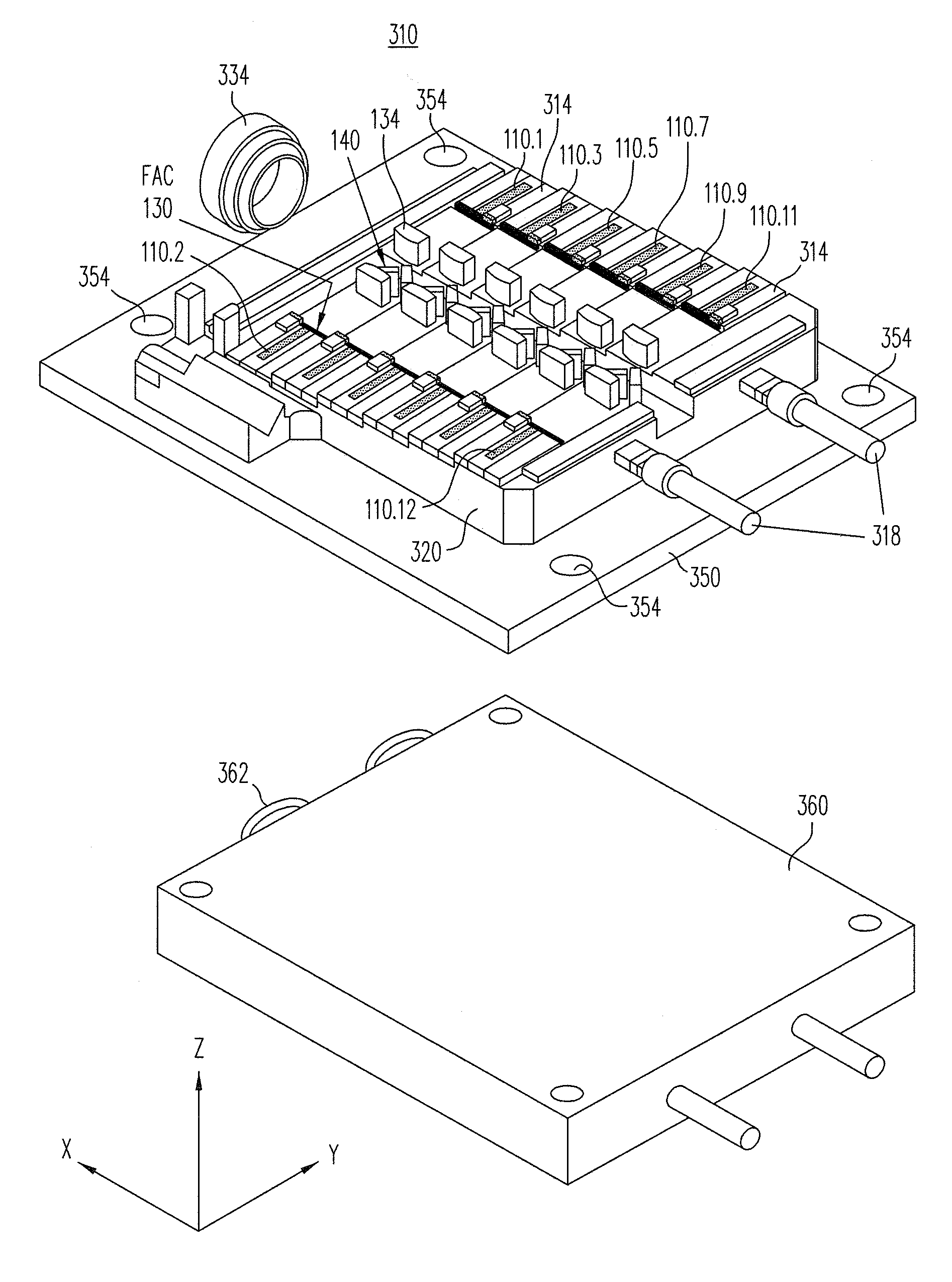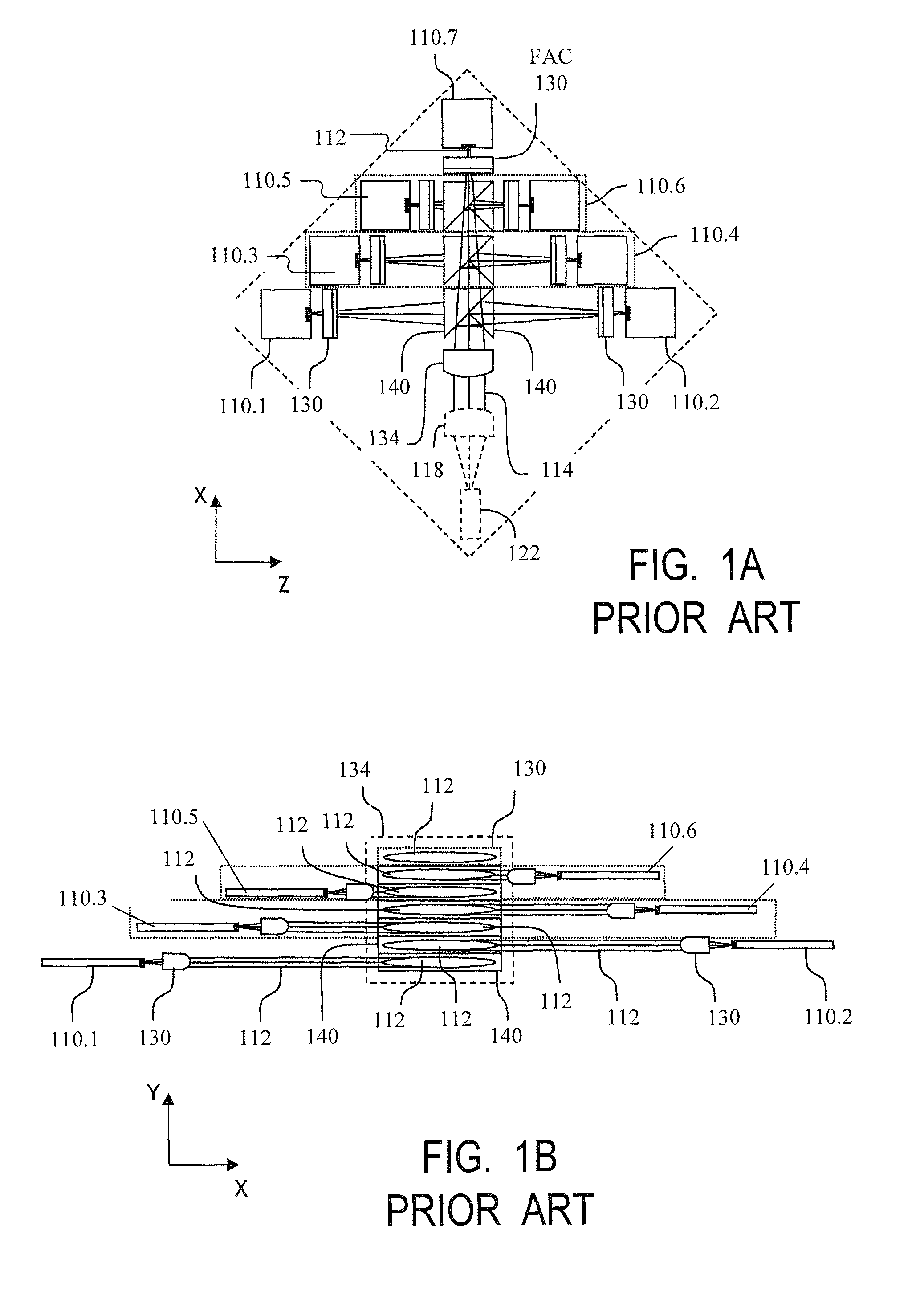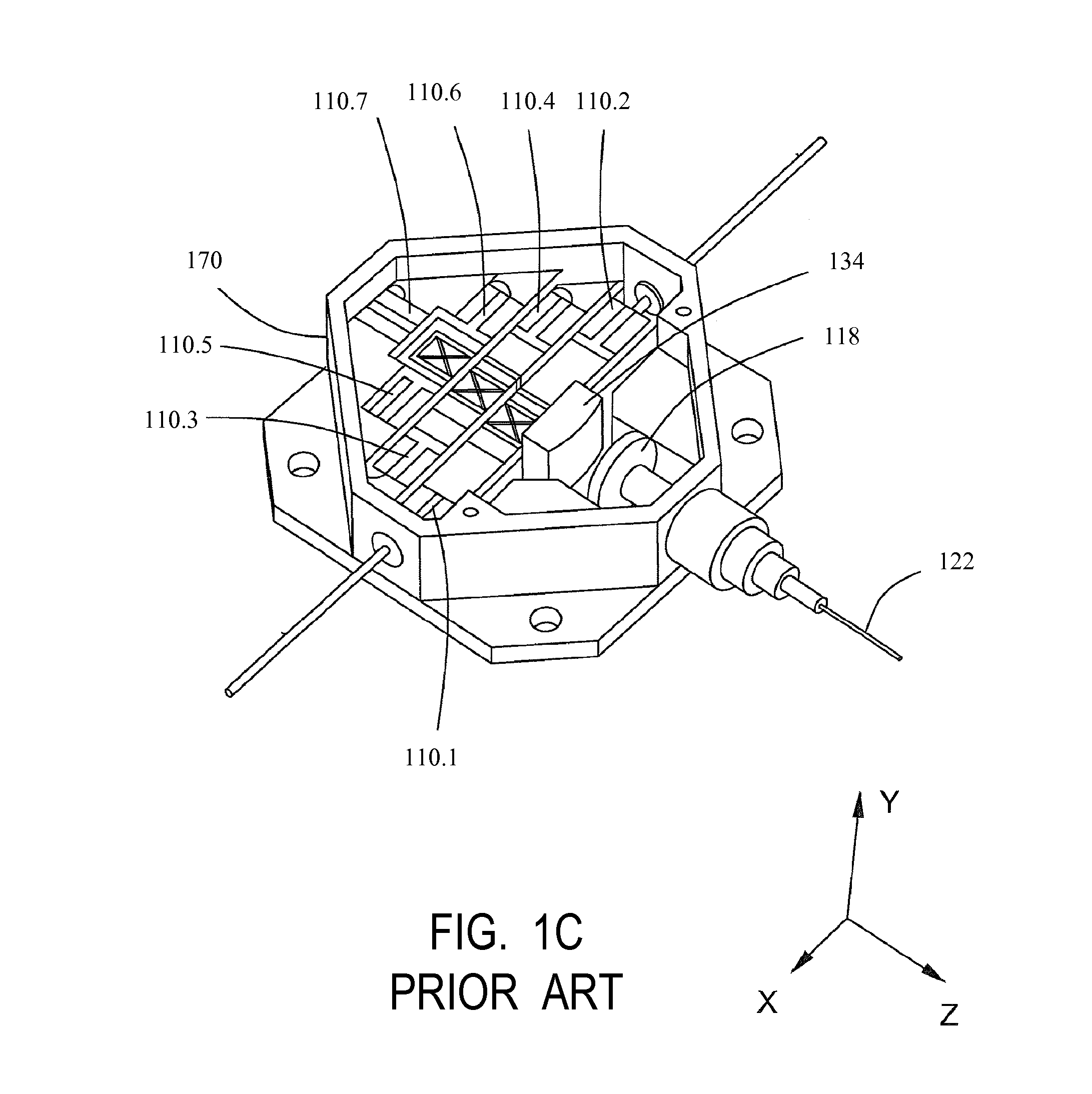Laser diode combiner modules
a technology of laser diodes and combiners, applied in the field of laser diode assemblies, can solve the problems of difficult beam combining, asymmetry complicating beam combining optics, and more difficult cooling, so as to reduce thermal impact, reduce thermal stability, and reduce the effect of thermal impa
- Summary
- Abstract
- Description
- Claims
- Application Information
AI Technical Summary
Benefits of technology
Problems solved by technology
Method used
Image
Examples
Embodiment Construction
[0038]The embodiments described in this section illustrate but do not limit the invention. For example, the inventions is not limited to particular dimensions and spatial arrangements except as defined by the appended claims. The features described as “horizontal” or “vertical” refer to a particular spatial orientation. However, neither the invention nor its embodiments are limited to any particular spatial orientation in manufacture, use or operation unless noted otherwise.
[0039]FIGS. 3A-3D, 4A-4B, and 5A-5B illustrate a laser assembly (laser module) 310 according to some embodiments of the present invention. FIG. 3A is a three-dimensional view; FIG. 3B is a top view; FIG. 3C is a side view; FIG. 3D is a three-dimensional, cross-sectional view showing a vertical cross section along the line D-D′ shown in FIG. 3B; FIGS. 4A, 4B, and 5A-5B are top views like FIG. 3B but showing some additional features.
[0040]Module 310 includes 12 single-emitter laser diode chips 110.1-110.12. Each di...
PUM
 Login to View More
Login to View More Abstract
Description
Claims
Application Information
 Login to View More
Login to View More - R&D
- Intellectual Property
- Life Sciences
- Materials
- Tech Scout
- Unparalleled Data Quality
- Higher Quality Content
- 60% Fewer Hallucinations
Browse by: Latest US Patents, China's latest patents, Technical Efficacy Thesaurus, Application Domain, Technology Topic, Popular Technical Reports.
© 2025 PatSnap. All rights reserved.Legal|Privacy policy|Modern Slavery Act Transparency Statement|Sitemap|About US| Contact US: help@patsnap.com



